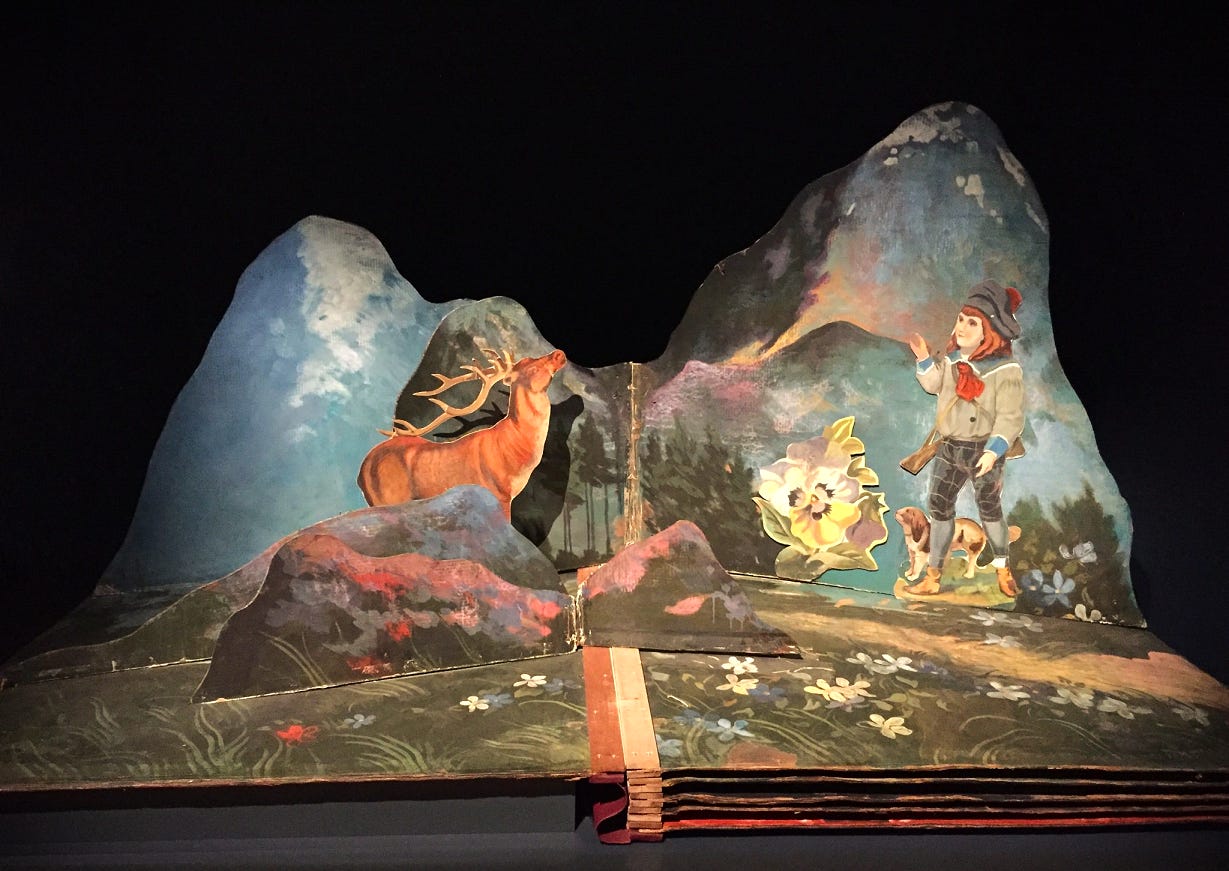The Cheviot, The Stag & Scotland’s Shifting Cultural Landscape
Celebrating fifty years of a ground-breaking play

This month marks the fifty-year anniversary of The Cheviot, the Stag & the Black, Black Oil, a ground-breaking play first performed in 1973 which examined profound questions around the history of the Highlands and Islands.
The play was taken to village halls across northern Scotland, holding a mirror up to a complex history of Clearances and land ownership. Remarkably, more than 30,000 people came out to see the first run.
The artist John Byrne created a painted stage set for The Cheviot in the form of a giant pop-up book (pictured above). The use of cardboard made it light enough to transport on the top of a van and set up quickly in different locations around Scotland, adding to the creative magic of the performance.
The Cheviot appeared at an important moment in Scotland’s broader cultural story, when a greater number of people became willing to throw off old-fashioned caricatures of their culture and embrace something more authentic and truthful, something more aligned to their real history, their real lives and real experiences.
Earlier this month, BBC Radio 4 aired a fifty-year retrospective on the The Cheviot, presented by the broadcaster and journalist Allan Little. The programme features a range of interviews with Scottish cultural figures, including those from Lowland and urban Scotland who also felt the deep resonance of this distinctly Highland play.
At one point in the documentary, Allan Little speaks about growing up ‘in a Scotland where Scottish voices in public, especially on television and in entertainment, were limited to certain kinds of roles – comedy, mockery even – and never the vehicle for love or anything particularly serious.’
But then came a gradual shift in culture, and what the poet Liz Lochhead describes as ‘a widening of what Scotland was’, thanks in part to moments of cultural breakthrough such as The Cheviot.
The success of the play tells us something interesting about the unpredictability of culture – that we can never accurately foresee what impact any work of art will have on the cultural landscape. There is no way to predict how large or small the ripples will be. Something can start off with little fanfare or acknowledgement, but then be subject to ongoing recognition, analysis and discussion fifty years later.
Equally, The Cheviot reminds us to question what kind of work audiences might be ready for. In one of the retrospective’s many interviews, Allan Little asks Liz Lochhead why Scots around the time of the 60s and 70s might have been ready to see a different side of themselves, to which Liz replies: ‘We were ready at that time because we had been starved of it. You don’t know what you’re starving for till you get it.’
The documentary also examines the changes in Scotland’s political landscape around that time, with Winnie Ewing and Margo Macdonald winning seats for the SNP in Labour’s old urban heartlands. This was the political backdrop to what was happening simultaneously in culture – a greater Scottish self-awareness, and a growing appetite for Scotland to find new ways of expressing itself.
As we celebrate fifty years of a ground-breaking moment in theatre, perhaps there is also a new question to be asked: How will our present culture reflect the enormous political and cultural changes Scotland continues to experience now? What could that look like? If the The Cheviot tells us anything, it’s that there is immense value to be found in giving people new ways of seeing their own lives, histories and experiences.


Interesting piece of art, and wonderful to remember just how well received the play was. Would have loved to have seen it!